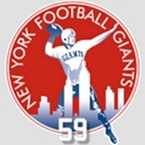John 3rd
Posts: 17178
Joined: 9/8/2005
From: La Salle, Colorado
Status: offline

|
I have been a busy boy creating a 'master' file for the Between the Storms Mods. With Michael playing into 1945 with his match and Sean and I at late-43, we have had enough play-testing to address issues within the Mods and I have been doing exactly that. It always irritates me when people, who don't know the Mods, criticize the Mods for being "a Japanese Fanboy's Dream." While these Mods are enhanced on the Japanese side, they are all grounded on actual history, writings of historical people, and/or legitimate 'what ifs' of the Pacific War and its history.
Here is a great example of BALANCE within the Mods. The Japanese build-up is obvious. War is coming. What if the United States took that a bit more seriously in 1941? Using the newly introduced ships as well as the Hepburn Report and Admiral Kimmel's own written desires, Between the Storms will feature and very different Pacific Fleet deployment. Here you go. ENJOY!
The Deployment and Actions of the Pacific Fleet Prior to December 7, 1941
Base Building and Reinforcements
The Hepburn Board. -- On June 7, 1938, acting Secretary of the Navy Charles Edison appointed a board consisting of Rear Admiral Arthur J. Hepburn, Commandant of the Twelfth Naval District, as senior member, and Rear Admiral Edward J. Marquart, Captain James S. Woods, Captain Arthur L. Bristol, Jr., Captain Ralph Whitman, C.E.C., as members, with Lieutenant Commander William E. Hilbert as recorder.
The board, which became known as the Hepburn Board, made an exhaustive survey of the strategic needs in connection with the naval defense of the United States and of existing facilities for meeting those needs. In an outstanding report submitted to Congress on December 27, 1938, the board recommended the establishment of new air bases and the expansion of existing bases to provide three major air bases on each coast, one in the Canal Zone, and one in Hawaii; with outlying operating bases in the West Indies, Alaska, and our Pacific island possessions. The board also recommended that the naval air training station at Pensacola be greatly enlarged and that possibly an additional air training station be established at Corpus Christi, Texas; new submarine bases be established in Alaska and the mid-Pacific area, and several existing stations be improved or retained. Some additional facilities were suggested for the existing destroyer bases at Philadelphia and San Diego. No new mine bases were considered necessary, but certain deficiencies were noted in existing bases. A general priority schedule was set up, based on the necessity for providing facilities when the ships and aircraft authorized by the Vinson bill would be completed. In addition, there was a list of projects, considered to be of immediate strategic importance, which should be undertaken at the earliest practicable date. These items were: (1) improvement of air facilities at Kaneohe Bay. Hawaii; (2) submarine and air bases at Wake Island, Midway Island, and Guam; (3) air facilities at Johnston Island and Palmyra Island; (4) air and submarine bases at Kodiak and Sitka; (5) and submarine facilities at San Juan, Puerto Rico.3
In making its studies and formulating its report, the Hepburn Board drew upon the great mass of plans and projects that had been developed by the various bureaus of the Navy as being desirable. As Admiral Hepburn testified at the Congressional hearings on his report, "I would say that every item that the board has suggested has been considered in the past some time by one department or another or by the Joint Board involved, and they have been put down as projects to be attained when they can get the money."4 The board performed an invaluable service in taking all these proposals and, within the framework of definite strategic necessities and available facilities, formulating a comprehensive and coordinated plan for development, especially in the field of aircraft.
Although the estimated cost of the programs set up by the Hepburn Board report was $326,216,000, the first request for authorization from Congress to initiate the program was for $65,000,000 to cover a three-year program. However, events were mounting rapidly, and by the time this program was well under way it had been overshadowed by the need for even greater and more expensive developments. In the general defense program that was to begin a year later, practically all the board's recommendations, except those relating to Guam, were carried out and contributed materially to our position when war actually developed.
Between the Storms takes the Hepburn Report and advances it anywhere from a few weeks to several months. Troops, aircraft, supplies, fuel, and base building are all fully underway when war breaks out. There are several benefits to this development in that bases are tougher, troops are more forward deployed, and—in general—the Japanese will be required to bring much more to the fight if they want to east—north, due east, and/or south.
December 7, 1941
Changes in Deployment and Bases
NorPac
Umnak
Convoy: APs: Henry Allen, Examiner, Santa Inez, Santa Barbara, and 3 AK
Escort: CL Concord and DDs Harwood, Decatur, Hart, and Smith
47th Construction Regiment, and 1/153 Inf Bn
Supply: 2,500 Fuel: 250
Dutch Harbor
VP-24 (6 PBYs)
Cold Bay
808th Aviation Eng Bn and 3/153 Inf Bn (from Annette Isle)
Fort-1
Supply: 1,500 Fuel: 150
Kodiak
Set-Up as a Sub Base with AS Pelias, 3 Fleet Boats, and 2 S-Boats. Additional Support Ships are now stationed there to handle the small set of warships assigned to NorPac. Nearly 5,000 Supply and Fuel are currently present.
CenPac
Pearl Harbor
2nd USMC Para Bn, 2nd Pioneer Bn, 34th Inf Reg, and 198th Field Artillery
Lihue and Kona
Both Bases have their AFs raised to 2, with additional supplies and fuel, a Base Force, and a Squadron of PBYs. The 3rd Marine Defense Bn is building up Fortifications on Lihue.
Midway
Task Force 419: 6 PT boats
VP-21 (11 PBYs), VMF-211 (6 Buffalo), and VMSB-232 (18 SBD)
1/298 Inf Bn
P-1 AF-3 Fort-2
Supply: 3,500 Fuel: 1,500
Wake
Task Force 421: 6 PT Boats
VMF-211 (12 Buffalo), VP-14 (12 PBYs)
P-1 AF-2 Fort-2
Supply: 3,900 Fuel: 1,500
A second Marine Defense Bn is added.
Canton
2/298 Inf Bn
P-2 AF-1 Fort-2
Supply: 1,800 Fuel: 8,000
Christmas Isle
3/298 Inf Bn
P-1 AF-0 Fort-1
Supply: 1,500 Fuel: 800
SoPac
Pago Pago
VMSB-231 (18 Vindicators) and 51st/16th PS (18 P-40)
2nd and 7th Marine Def Bn, 104th USN Base Force, 30th Base Group and 160th Reg of the 40th ID
P-2 AF-2 Fort-2
Three Task Forces Present:
TF 442: CL Detroit, DDs Oreleck, SP Lee, Woodbury, Delphy and APs Pres Polk, Madison, and Monroe
TF 443: CL Raleigh, PC Taney, AKs Alcoa Pathfinder, Shooting Star, Ruth Alexander, and TK Eidsvold
TF 445: PC Sacramento and AO Tippecanoe
Disbanded in Port: 4 SS (S-Boats), AS Fulton, AD Rigel, AE Pyro, and an AM
Admiral Kimmel and the SCOUTING FORCE
The impact of the Hepburn Report and corresponding decision to implement it more quickly as well as the obvious rising danger of imminent war allow for Admiral Kimmel to deploy the entire Scouting Force of the Pacific Fleet on two important missions just prior to December 7th. The first is a quick voyage by CVL King’s Mountain to provide badly needed fighter reinforcement to Wake Isle. The 2nd mission is far more vital in that the bulk of the Scouting Force provides direct cover to the arrival of an Army Regiment as well as supplies and fuel to Pago Pago. Lexington is also tasked with the delivery of the Marine Dive Bomber Squadron to this location.
The SCOUTING FORCE Deployment
TF442
The King’s Mountain TF (CVL King’s Mountain 18 Buf, 12 SBD, 6TBD), CA New Orleans, Minneapolis, and 6 DD) have just delivered the other portion of Marine Fighter Squadron 211 to Wake. This TF is retiring towards Pearl Harbor on the 7th. It is exposed in the Central Pacific.
TF 406
CV Enterprise (18 F4F, 36 SBD, 15 TBD), CA Northampton, Chester, and 8 DD are just east of Canton Isle providing flank guard to the reinforcement of Pago Pago.
TF405
CV Lexington (18 F4F, 36 SBD, 12 TBD), CA Portland, Astoria, and 7 DD are at Pukapuka having just flown off the Marine Vindicator Squadron to Pago Pago.
TF403
CLV Jacksonville (12 Buffalo and 6 SBD), BCs Ranger, Constellation, CAs Indianapolis, Salt Lake City and 6 DD are between the two Carrier TFs.
_____________________________
|
 Printable Version
Printable Version












 New Messages
New Messages No New Messages
No New Messages Hot Topic w/ New Messages
Hot Topic w/ New Messages Hot Topic w/o New Messages
Hot Topic w/o New Messages Locked w/ New Messages
Locked w/ New Messages Locked w/o New Messages
Locked w/o New Messages Post New Thread
Post New Thread